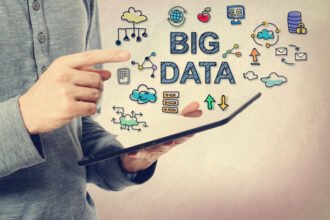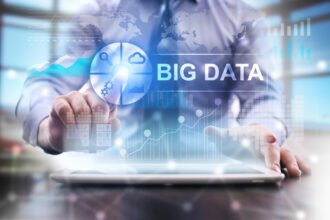 Yesterday at the top of my gmail account was this message: “M.S.
Yesterday at the top of my gmail account was this message: “M.S.
 Yesterday at the top of my gmail account was this message: “M.S. in Analytics—www.analytics.northwestern.edu—How do I become a data scientist? Northwestern Engineering.” Now raise your hand if you’ve had a similar experience.
Yesterday at the top of my gmail account was this message: “M.S. in Analytics—www.analytics.northwestern.edu—How do I become a data scientist? Northwestern Engineering.” Now raise your hand if you’ve had a similar experience.
Why was this particular ad served up to me? Well, according to Google, “This ad is based on emails from your mailbox.”
OK, so Google seems to know more about me than I do. And it’s not just Google. It appears that most of the websites we visit know more about us then we know about ourselves.
And if you read this article in io9, that’s just the beginning, thanks to big data.
“Every day you’re helping to generate masses more data, which computers are getting better and better at crunching,” according to the article. “Soon the predictive power of these systems will become so powerful, it will almost seem like magic.”
Here are a few of the ways io9 says big data is creating “the science fiction future”:
- Dating sites that can predict when you’re lying: OKCupid, which has seven million active users, can figure out what you’re most likely to fib about like your height and how much money you make. Can you imagine what’ll happen when sites like these start messing around with unstructured data like the contents of your “about me” profile. Now you’re working with way more than 99 dimensions of compatibility, and that means it’ll be much easier to find your future honey using digital sourcing rather than meeting him or her in a bar.
- Scientists and doctors can make sense of your genome – but so can insurers: Using all the data that’s out there, scientists can unlock an individual genome in just weeks, and at a relatively modest price. Recently Ion Torrent released technology that brings the cost of sequencing below $1000. So now scientists can examine large genetic data sets for disease patterns, and doctors can start customizing treatments to individual genetic profiles. That will lead to ground-breaking research and more personalized medicine. The problem is that insurers could also have access to that data and possibly use it to raise their rates.
- Surveillance gets really Orwellian, really fast: Recently the New York Police Department created a a social media unit to “snoop” on Facebook and Twitter looking for mentions of criminal activity. And, thanks to new analytical tools, police can unearth all kinds of patterns. Not only that, but there are new ways of collecting that information that has to be analyzed. Take, for example, the U.S. Army, which is deploying a new drone helicopter to Afghanistan that’s equipped with something called the Autonomous Real-time Ground Ubiquitous Surveillance Imaging System. That system is going to collect six petabytes—or almost 80 years’ worth—of HD video every single day. Every. Single. Day. As io9 says, “That’s a lot of data to crunch.”
Next Steps
You can read more of io9’s predictions for the uses of big data here. You can also subscribe to our blog to stay informed on this and other data analytics topics.
Linda Rosencrance
Spotfire Blogging Team









